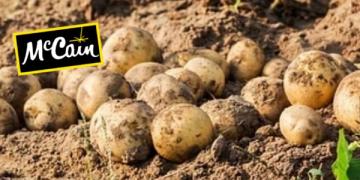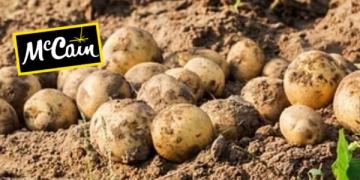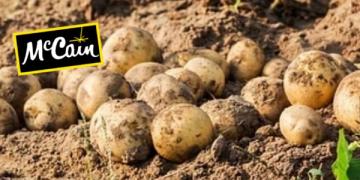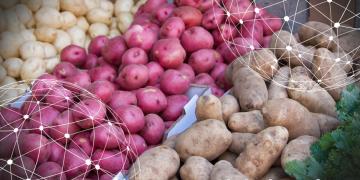Colombia: A study revealed that some varieties of native potatoes are more efficient at using nitrogen.
After analyzing more than 100 genetic types, an expert in Agricultural Sciences from the National University of Colombia identified 5 genotypes with better use of this element and 3 genes that would explain that capacity.
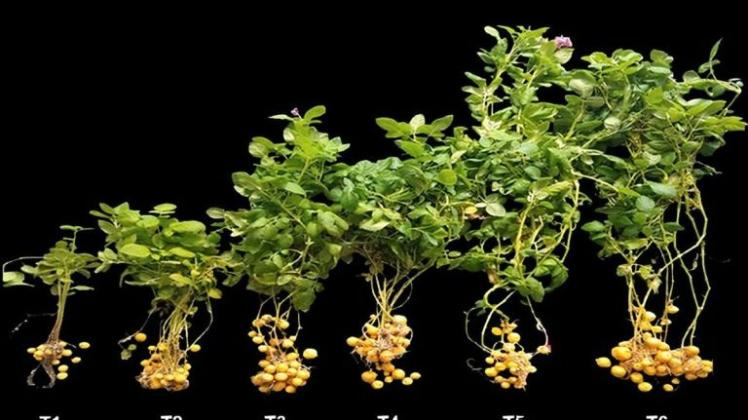
The Colombian Creole potato isn’t just yellow and round; it can also be purple, elongated, and oval. But its differences go beyond appearance and flavor. A greenhouse study revealed that some varieties are more efficient at using nitrogen from the soil, an essential nutrient for their growth.
“The problem with nitrogen fertilizers in the country is that growers apply too much to their potato crops,” explains agronomist Aura Natalia Jiménez Medrano, Master of Science in Agriculture from the National University of Colombia (UNAL), who has closely studied this issue, especially in the Phureja or “egg yolk” type of native potato, the traditional yellow variety that usually accompanies ajiaco or picadas, typical Colombian dishes.
According to the expert, during cooking or frying, excess nitrogen in tubers can promote the formation of acrylamides, compounds that in high concentrations have been associated with long-term carcinogenic effects.
In addition to its impact on health, the excessive use of fertilizers also affects ecosystems. Although the precise amount of nitrogen that ends up in rivers, lakes, or reservoirs in Colombia has not been determined, it is known to contribute to eutrophication, a process in which algae proliferate excessively and consume available oxygen, affecting fish and other species. Many potato crops are located near páramo ecosystems, where alterations due to excess nitrogen have already been documented, although detailed studies on the extent of the problem are still needed.
In Europe, there are strict regulations on nitrate content in potatoes, especially in tetraploid varieties (with four pairs of chromosomes), similar to the Pastusa or Sabanera varieties grown in Colombia. In Colombia, such controls do not exist, and the native (diplod) potato has lagged behind in addressing this issue.
Aware of the need to reduce the use of fertilizers —which can reach up to 250 kilograms per hectare in each crop of native potatoes—, the master’s student carried out an experiment with more than 100 genetic types from the collection of the Faculty of Agricultural Sciences of the UNAL, with specimens of different sizes, colors and shapes.
The objective was to determine which varieties make the best use of nitrogen, since it has been proven that native potatoes only absorb on average about 50% of the nitrogen applied to the soil, which calls into question the practice of using more fertilizer to compensate for the losses.
THE VARIETIES OF THE FUTURE
For several months, the researcher cultivated hundreds of native potato plants in pots under controlled conditions inside a greenhouse. There, she recreated two scenarios: one with 0.56 grams of nitrogen (low treatment) per plant (low supply) and another with approximately 1.78 grams of nitrogen (high supply). The goal was to observe which plants continued to grow strong even with less fertilizer.
Each plant was evaluated as if it were a patient in a medical check-up: the chlorophyll content of the leaves, size, number of tubers, nitrogen and carbon content in its tissues, and nitrogen utilization indices were measured, variables that made it possible to determine how "efficient" each one was in the use of the nutrient.
“When fertilizer was increased, the tubers didn’t grow any more; the nitrogen was wasted as excess foliage, confirming that more isn’t always better. However, five genotypes of native potatoes maintained healthy tuber and root development despite the nitrogen shortage, indicating more efficient use of the nutrient,” the engineer explains.
In total, more than 10 physiological and chemical characteristics were measured, including chlorophyll content in the leaves, biomass, number of tubers, and nitrogen and carbon content in tubers and leaves. Plants that used nitrogen more efficiently had higher chlorophyll and nitrogen content in their tissues, and their tuber production exceeded the average of the other plants.
THE ANSWER IS IN THE DNA
To understand this capacity, in the Molecular Biology Laboratory the master’s student extracted DNA from young leaves and applied PCR amplification techniques (polymerase chain reaction) and found 3 essential genes: AMT1.1, which transports nitrogen from the soil; 2-OGD, an enzyme that converts it into amino acids and proteins; and PPR, which regulates metabolism and helps the plant respond to stress from lack of nutrients.
These genes, which exhibit molecular markers associated with efficient nitrogen use, are now becoming a valuable tool for potato breeding programs in Colombia. In the future, they could be used to select or cross more efficient local varieties, capable of growing with less fertilizer without sacrificing productivity.
The data were obtained using a SPAD-502 meter, which records chlorophyll in the leaves, an elemental analyzer by combustion (Dumas method) to measure carbon and nitrogen in tubers, stems and leaves, and calculated the total biomass by weighing the plants after drying them at a controlled temperature.
Beyond the laboratory data, the work points to something profoundly human: improving the lives of both potato farmers and end consumers. If the most efficient local varieties reach the fields, farmers could reduce fertilizer use by up to a third, spend less money, and prevent further soil and water source degradation.
Every advance counts in a country that produces more than 2.5 million tons of potatoes annually, according to data from the Colombian Federation of Potato Producers. Nitrogen-efficient genotypes would transform crops in Boyacá, Cundinamarca, Nariño, and Antioquia, reducing fertilizer costs and environmental damage. Planting with science is also planting for the future, because behind every native potato lies the history and work of thousands of families who make the daily sustenance of Colombians possible.
Fuente: redagricola.com

